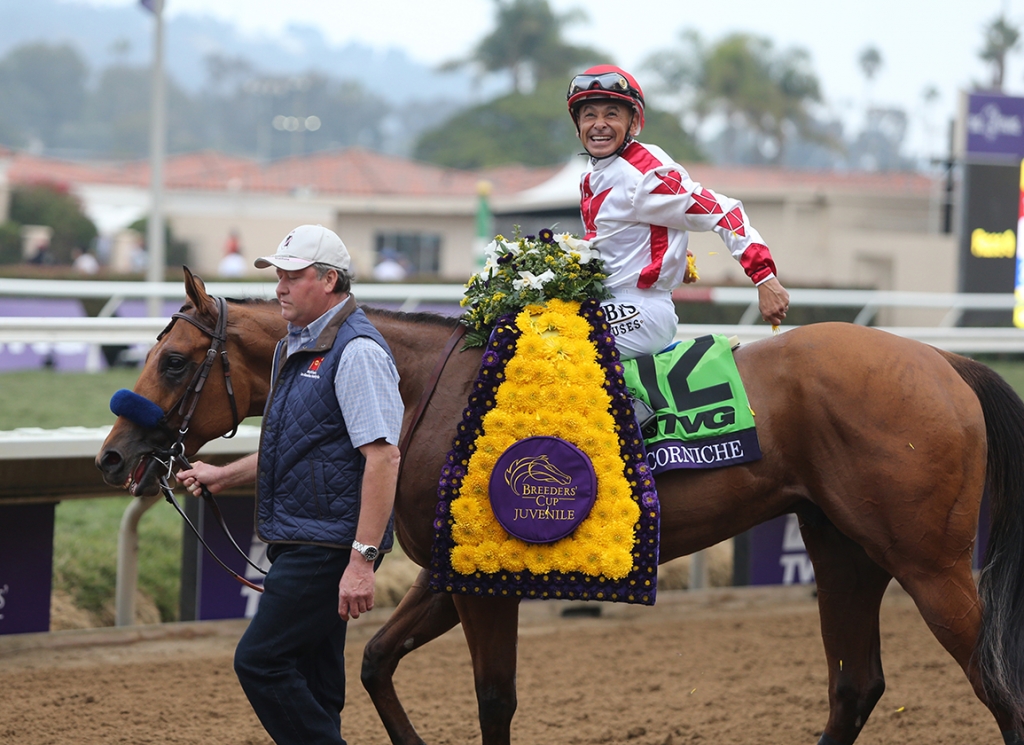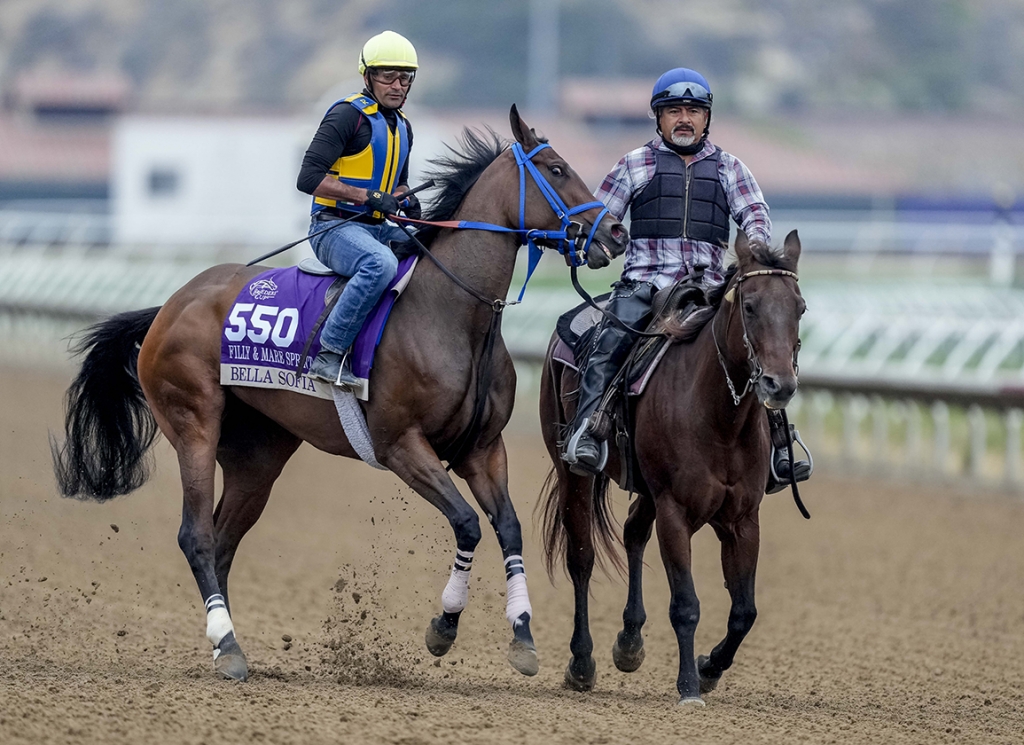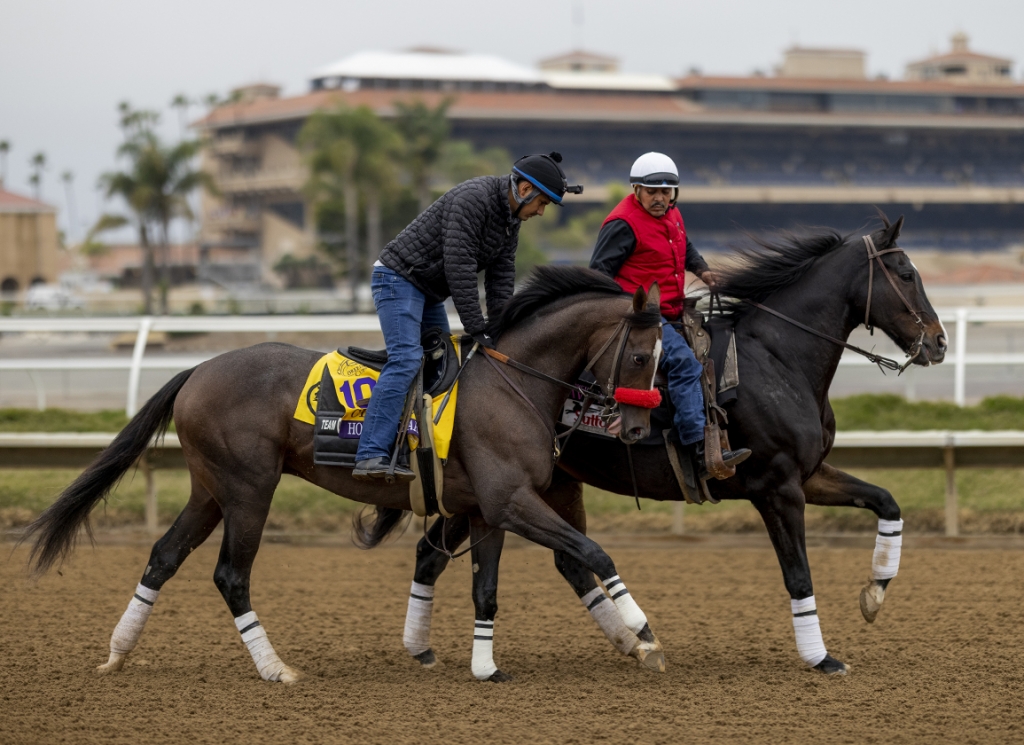Though in most respects I only grow older, and no wiser, I do try nowadays not to get so cross about things. If I think people are breeding to the wrong horses, that's their prerogative. It's a difficult game; a still harder business. The Thoroughbred is reliable only as a vehicle of humility. We're all wrong far more often than we're right. And the beauty is that we have a proving ground out there, with a wooden post at the end. If you really are right, and I'm wrong, that's where we can find out.
True, that isn't quite so effective a consolation when so much breeding is predicated on a different proving ground altogether, in the sales ring. But even that unwholesome separation of priorities–by which the most “commercial” sires tend to be the least “proven”–creates an enhanced opportunity. “Don't get mad, get even.” Because some of our most venerable and valuable races are nowadays less competitive, especially in Europe, because the genetic assets required are somehow considered uncommercial.
Even in that unbelievably febrile market at Tattersalls this week, then, it no longer infuriated or depressed me to see significant investment entrusted to some whose principal professional asset is a practised plausibility. I know I have shared with you before how one of these characters once sneered at my polite inquiry whether his extremely wealthy patron might benefit from the invigorations available in American blood. He replied that he had never darkened the doors of Keeneland, and had no intention of doing so. Any fool knew that “over there they are only interested in speed”.
Well, I think we're safe in assuming that this gentleman won't be tuning in to Aqueduct on Saturday, where adolescent horses testing the water for the greatest theater of the American Turf–which, in healthy contrast with his home marketplace, maintains the two-turn pedigree at the forefront of commercial breeding–will be running nine furlongs through a tiring winter surface before they have even reached their third birthdays.
That being so, I wonder how he might account for the transformation achieved in the European Classic Thoroughbred by the winner of the GII Remsen S. in 1963? Northern Dancer clearly founded his transatlantic dynasty on the definitive attribute of the dirt runner: the ability to carry speed. Yet nowadays commercial breeders in Europe reject bloodlines in which the speed-carrying nature of “stamina” is not properly understood, in favor of sires whose mere precocity is, in turn, mistaken for speed.
On the other hand, it's difficult to refute the charge that the American Thoroughbred operates within too narrow a spectrum. While there are extreme tests, from half-mile maidens to the ultimate outlier of the GI Belmont S., those youngsters contesting the Remsen will typically spend the rest of their careers within a very finite range–a furlong or two less, or a furlong more–either side of this test.

Remsen winner Catholic Boy went on to win Grade Is on both dirt and grass | Sarah Andrew
Aficionados of this storied blue-collar circuit rightly cherish To Honor and Serve (Bernardini), who returned the year after his Remsen to win the GI Cigar Mile on the same card. In theory, lasting nine furlongs as a juvenile and then having the speed to win a single-turn mile as a sophomore suggests an impressive range. The Cigar, like its cousin the GI Met Mile, is an optimal speed-carrying test. A more conventional double, as such, would appear to be the one completed in the Cigar by the likes of Congaree (Arazi) and Kodiak Kowboy (Posse), who also won Aqueduct's other (surviving) Grade I prize in the Carter H. Unfortunately neither of that pair, nor To Honor and Serve, proved successful at stud. But the fact is that all their accomplishments were really in the same register.
During the years when Aqueduct hosted the race, the GI Jockey Club Gold Cup was still staged over two miles. When Buckpasser won the 1966 running, it was only 19 days since he had won the Woodward, over 10 furlongs, and in the meantime Eddie Neloy had kept him ticking over with a win over 15. Yet Buckpasser won his next start, the Malibu, over seven! In his juvenile campaign the previous year, moreover, his Hopeful success at Saratoga followed seven starts already between five and six furlongs.
Another Hopeful winner who went on to win the Jockey Club Gold Cup (twice, at Belmont), Nashua, had won over 4.5 furlongs on debut. Yet nowadays I have to get excited by a horse like Omaha Beach (War Front), because he could win Grade Is in the same campaign at six and nine!
Nashua and Buckpasser, of course, both became vital distaff influences: Buckpasser was among the greatest of them all, while daughters of Nashua gave us contrasting influences in Mr. Prospector and Roberto. To me, we simply won't know where to find that kind of bedrock if we no longer measure the full capacity of our elite performers. That doesn't necessarily mean modern horses don't have the same kind of range, though you are entitled to doubt it. But the modern race program and modern trainers together mean that we can only guess.
Performance is the best way we can identify heritable strengths. If breeders are to mix the right shades to achieve some kind of masterpiece on the genetic canvas, they need to see the full palette.
The Remsen would be a wild proposition for any European juvenile expected to operate at similar distances the following spring. (Their closest equivalent, the G1 Criterium de Saint-Cloud over 10 furlongs of mud, is one for the real sloggers.) Yet whoever wins Saturday will be said to show “versatility” if he someday returns to Aqueduct to add the Cigar or even the Carter.
Breeding a Thoroughbred should be like composing a symphony. You can't just rely on the string section: you need the layers and shades and tones provided by brass, wind, percussion. Yet nowadays we not only compose symphonies without that kind of depth. We don't even use the full string section. Commercial breeders confine themselves to the sharp, vivid speed of the violins. Those trying to win big races with homebreds favor the resonance of the cellos and double bass. But the string section owes its richness and balance to the violas, which link and express the best elements on either side.
Okay, so it's no longer realistic to expect people to use the full range of instrumentation, from the flute to the kettledrum, like Nashua or Buckpasser. But let's not make it too easy for that fabulously obtuse compatriot of mine to justify his prejudices, simply because Group 1 prizes in Europe are contested from five furlongs to 20.
Yes, it's great that Essential Quality (Tapit) could win a maiden over six as well as the Belmont. But we know that the former should be within the compass of any elite prospect against overmatched inferiors; and that the latter is nowadays a unique and exotic assignment, only embraced by the handful to whom it is a sufficiently pressing opportunity, and certainly never to be repeated. The rest of his career took place within a distance span of 300 meters.

Flintshire | Sarah Andrew
It's also gratifying that the 2017 Remsen winner, Catholic Boy (More Than Ready), could go on to win Grade Is on both dirt and grass. But we know that the turf section of the orchestra gets very little use from Bluegrass breeders, whose neglect of a stallion as eligible as Flintshire (GB) (Dansili {GB}) this week saw him returned to Europe for a reboot in France.
In the recently published covering stats, Flintshire was revealed to have covered eight mares last spring. EIGHT! This horse retired as the highest earner in the history of the Juddmonte program, and was supplanted only by another from the same family in Enable (GB) (Nathaniel {Ire}). Having maintained top-class acceleration (carrying his speed, turf fashion) to the age of six, he has so far had a single crop of sophomores. These included one that flew into fifth of 19 in the G1 Prix du Jockey Club, while he had a juvenile graded stakes winner at Del Mar only last weekend. The reliably far-sighted farm that welcomed Flintshire to Kentucky said that it was trying to make the Bluegrass “relevant to all marketplaces” once again. Well, good luck with that.
It's almost enough to make me angry. But I remind myself that I'm not doing that any more. If I feel so offended on Flintshire's behalf, then it's up to me to find a way of sending him a mare in Normandy. But please, please, don't make it so easy for that clown to dismiss the American Thoroughbred as a one-trick pony.
The post This Side Up: Using the Full Genetic Orchestra appeared first on TDN | Thoroughbred Daily News | Horse Racing News, Results and Video | Thoroughbred Breeding and Auctions.





